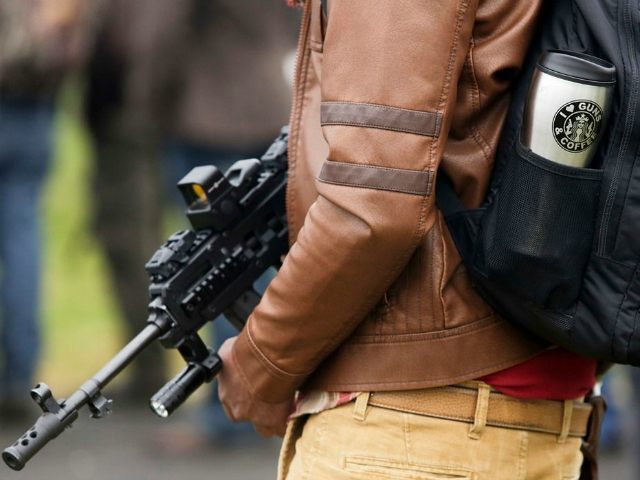With incessant calls to ban “assault weapons” arising from the Democrat Party — calls that sometimes hit a fever pitch when you add in the voices of Democratic surrogates in the media and gun control groups — it seems to be a good time to ask a key question: What is an “assault weapon?”
Is it a gun that shoots a certain round? Say a .223 or a 5.56? Or is a gun that has a flashlight on it? What about a laser or an aftermarket grip, or a heat shield, or flash hider?
Does the term “assault weapon” only apply to black guns? Or can an “assault weapon” be white or green or red or brown or camouflage? Can it be pink?
Does an “assault weapon” use magazines or does it use what Sen. Tim Kaine called “ammunition clips?” After all, President Obama recently described the Glock handgun Omar Mateen carried in Pulse Orlando as a gun that “had a lot of clips in it.”
Is a clip like a bullet or do Kaine and Obama simply not understand firearm basics?
Here’s the point: “assault weapons” is a made up term that applies to whatever best serves Democrats who are pushing gun control at any given time. After all, the New York Times reports that the term “assault weapons” is a “myth” Democrats created in the 1990s.
And according to the NYT, the “myth” came into play when the Democrats — who were eager to find a scapegoat for escalating crime in the early 1990s — created a “politically defined category of guns” they could then demonize and ban. They subsequently achieved an “assault weapons” ban in 1994, and it lasted until 2004. And when today’s Democrats appeal to that ban as one that should be re-instituted, they prove they understand little about it.
For starters, the 1994 did not ban “assault weapons.” Rather, it banned cosmetic features that Democrats consider part and parcel to “assault weapons.”
To put it another way, the 1994 ban did not ban AR-15s in general. Rather, it banned flash hiders, certain fore stocks and grips, collapsible and folding rear stocks, “high capacity” magazines, etc. It banned things that made the gun look like the scary guns Democrats think about when they think about an “assault weapon.” But it did nothing to change or ban the actual gun.
Were certain guns explicitly banned? Yes. But the larger scope of the ban was so cosmetically based that manufacturers could simply remove certain features, lengthen the barrel slightly, label the gun a “target rifle,” and continue selling them. For example, according to the Washington Post, while the Colt AR-15 James Holmes used in his attack on the Aurora movie theater would have been banned, a “Colt Match Target rifle” would not. The difference between the AR-15 and the target rifle is largely cosmetic.
Note: None of the differences in the two guns impacts basic operation, just as the presence or absence of a collapsible stock has no effect on bullet velocity.
In addition to all these things, if you owned an “assault weapon” when the 1994 ban took effect, you were allowed to keep it. The prohibitions on AR-15s and other semiautomatic rifles only applied to new guns.
Do you see the myriad problems? For starters, the very term “assault weapons” was created for the purposes of banning what it defined. But the ban, based on cosmetics, only prohibited certain external features of certain guns that Democrats wanted to eliminate. Yes, a certain number of guns were banned outright — that number was less than 20 — but beyond that, manufacturers could simply drop the cosmetic features Democrats hated most and continue selling guns that operated identically to those they manufactured in 1993, 1992, 1991, etc.
As stated earlier, these things appear to be lost on today’s Democrats who talk as if the ban really banned a majority — or even a plurality — of semiautomatic rifles. Of course there are certain Democrats on whom it is not lost but who will never let you know what they know. And that is because they view any chance to enact a new “assault weapons” ban as an opportunity to expand the list of cosmetic features that qualify a firearm as an “assault weapon.” And a few of them want the opportunity to do what they did not do in 1994, namely, actually ban “assault weapons” altogether — banning both the manufacture and possession of weapons like the AR-15, America’s most popular rifle.
AWR Hawkins is the Second Amendment columnist for Breitbart News and political analyst for Armed American Radio. Follow him on Twitter: @AWRHawkins. Reach him directly at awrhawkins@breitbart.com.

COMMENTS
Please let us know if you're having issues with commenting.